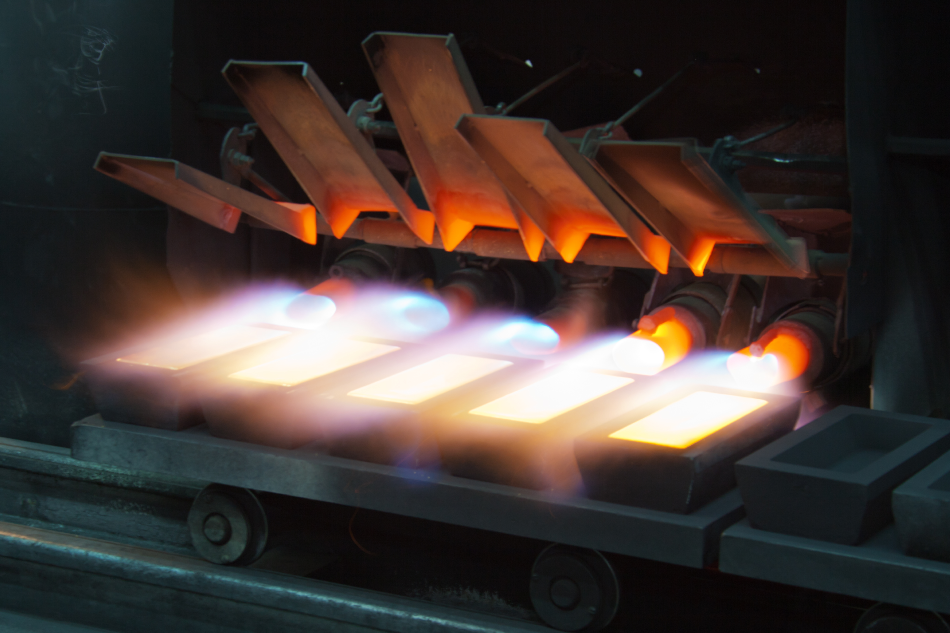
Andrey N Bannov / Shutterstock
An Utah based company has created a molecularly imprinted polymer ion exchange resin to replace activated carbon that has been reported to have the potential to increase the profits of gold mining projects by roughly $100 per ounce. This is done by cutting the costs of processing and increasing the gold extraction efficiency.
While activated carbon is the most widely used medium in the gold mining industry for extracting gold, it has its fallbacks in that it isn’t of optimum efficiency, plus costs are wasted due to the inability to recover all the carbon after the process is completed.
For this reason, Sixth Wave Innovations have established a new medium, which they believe could boost profits by billions if it is widely adopted.
Replacing Carbon with Molecularly Imprinted Polymer Ion Exchange Resin
The method of processing gold hasn’t radically changed in the last hundred years. Activated carbon is, and has been used as the most common medium during the cyanide leaching process. In order to extract gold from the ore, it is crushed into a powder and integrated within a pregnant leach cyanide solution. This solution is then filtered through activated carbon to withdraw the gold. Finally, the absorbed gold within the carbon is separated through elution and then regenerated in a kiln.
Although activated carbon has been used consistently for the past century, it isn’t the perfect medium for carrying out this process. Industry experts are aware that its capacity to absorb gold isn’t optimal, and that it can vary depending on the metallurgy of the ore, as well as the quality of the carbon.
In addition to this, the second problem with activated carbon is that it’s not possible to recover all of the material at the end of the process. Generally, around 10% is lost, which means that there is the added cost of replacing the carbon each time the process is conducted.
Finally, gold is not the only mineral that is absorbed by the carbon in the leaching process. Often other, undesired minerals become trapped, which is known as organic fouling, which makes it more difficult, time-consuming and costly to extract pure gold.
Innovative IXOS® Bead
To address the limitations of carbon, chief scientific officer Dr. Glen Southard at Sixth Wave Innovations lead the development of the IXOS® bead. The team innovated a new nanotechnology resin which has been designed to specifically attract only gold. The molecular pockets of the resin have been created to only accept gold, and not other metals, leading to a higher purity of gold.
Further to creating purer gold, the IXOS® beads are easy to recover, and they have been shown to be highly efficient in the recovery of gold from the ore (98%). In addition, the unloading (“elution”) process is simpler than for activated carbon and therefore less expensive.
Cost Reduction Result
The IXOS® beads are able to lower costs to gold companies in several ways. For example, it raises the percentage of gold that can be obtained by the ore. In fact, it can obtain 10 times the amount that activated carbon can, lowers the amount of gold that becomes lost within the carbon, and eliminates the expense of replacing the medium after each use as 100% of the IXOS® beads can easily be recovered and can actually be confidently reused for up to two years. Further to this, gold companies can expect reduced operating costs through the difference in the process by using the beads compared with carbon, lower temperatures can be used and smaller plants are needed, meaning that energy costs are lowered.
Overall, the innovation developed by Southard’s team is proven to be able to lower the costs of gold processing in numerous direct and indirect ways, making the solution a potential game-changer for the industry.
Source
Disclaimer: The views expressed here are those of the author expressed in their private capacity and do not necessarily represent the views of AZoM.com Limited T/A AZoNetwork the owner and operator of this website. This disclaimer forms part of the Terms and conditions of use of this website.